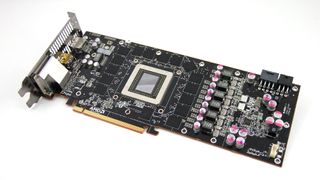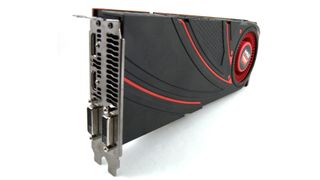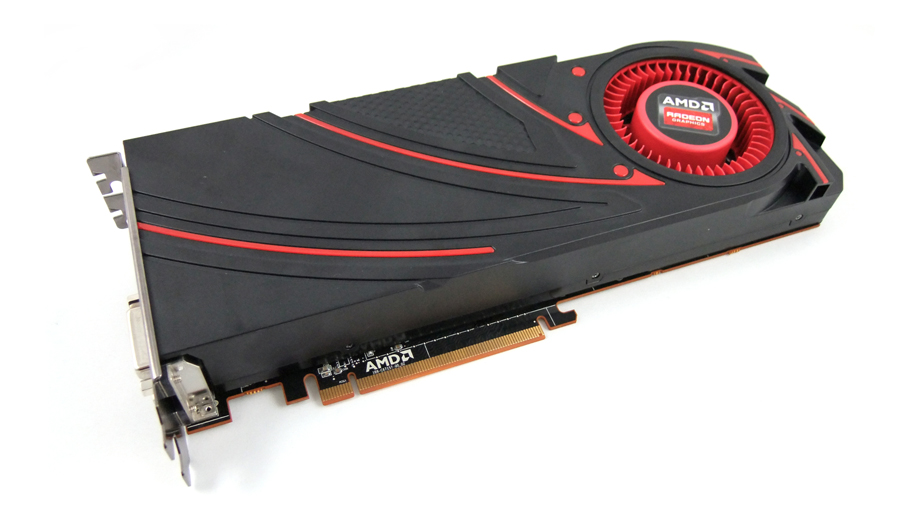TechRadar Verdict
Pros
- +
Super bang for buck
- +
Decent value for a high-end card
- +
Indistinguishable performance from 290X
Cons
- -
Still not within the price range of many
- -
Makes AMD look silly to put 290X out first
Why you can trust TechRadar
No sooner had we put the finishing touches to our R9 290X review but the red-tinged graphics gurus go and release another new card based on the exact same GPU. So here it is, the Radeon R9 290, another new graphics card based on the Hawaii silicon. And it's a bit of a doozy.
We would bet that when anybody who dropped a lot of money on an R9 290X is probably going to be cursing vociferously. At a far cheaper price point all you're really losing out on is the 'X' in the title – the actual gaming performance has barely suffered at all.
Surely there must be more than just a missing 'X' though, you're probably musing, and you would be right. The core clock speed has taken a bit of a hit, dropping down the maximum speed to 947MHz from 1GHz and AMD has shaved off some 256 Radeon cores from the full fat Hawaii XT GPU. With those cores have gone sixteen texture units, but that's it, that's all that you're missing.

Everything else, from the 4GB GDDR5 video memory to the 64 ROPs and enormous 512-bit memory bus, remains exactly the same as this card's big brother.
So it's still the same massive Graphics Core Next GPU based on the 28nm production process, with 6.2 billion transistors across its 455mm2 die-size. And all that together means this is one incredibly powerful graphics card that looks set to be the price / performance hero of this generation.
AMD has taken its time putting together a genuinely powerful iteration of its graphics architecture, but it looks like the wait might well have been worth it for the red side of the graphics divide.
Performance
Nvidia has been keen to point out that the GK110 GPU at the heart of its top end of graphics cards has the most raw GPU performance of all the enthusiast-class cards around right now. That's born out by the higher performance of the Titan in the Heaven 4.0 synthetic benchmark. It's not such good news for Nvidia in the real-world gaming benchmarks however, with the Radeon cards showing their dominance almost across the board.
DirectX 11 synthetic performance
Heaven 4.0 - FPS: higher is better
Radeon R9 290 - 31.2 (16.7)
Radeon R9 290X - 33.7 (17.4)
GeForce GTX Titan - 37 (18.2)
GeForce GTX 780 - 33.2 (16)
DirectX 11 gaming performance
Bioshock Infinite - FPS: higher is better
Radeon R9 290 - 55 (16)
Radeon R9 290X - 57 (16)
GeForce GTX Titan - 60 (11)
GeForce GTX 780 - 56 (11)
Company of Heroes 2 - FPS: higher is better
Radeon R9 290 - 27 (14)
Radeon R9 290X - 29 (15)
GeForce GTX Titan - 25 (12)
GeForce GTX 780 - 22 (11)
GRID 2 - FPS: higher is better
Radeon R9 290 - 77 (62)
Radeon R9 290X - 86 (68)
GeForce GTX Titan - 77 (61)
GeForce GTX 780 - 70 (50)
Total War: Rome II - FPS: higher is better
Radeon R9 290 - 34 (11)
Radeon R9 290X - 36 (13)
GeForce GTX Titan - 33 (12)
GeForce GTX 780 - 30 (9)
Metro: Last Light - FPS: higher is better
Radeon R9 290 - 25 (13)
Radeon R9 290X - 26 (13)
GeForce GTX Titan - 24 (13)
GeForce GTX 780 - 23(13)
DirectX 11 1080p performance
Bioshock Infinite - FPS: higher is better
Radeon R9 290 - 90 (18)
Radeon R9 290X - 93 (18)
GeForce GTX Titan - 100 (11)
GeForce GTX 780 - 92 (10)
Company of Heroes 2 - FPS: higher is better
Radeon R9 290 - 45 (24)
Radeon R9 290X - 48 (26)
GeForce GTX Titan - 42 (21)GeForce GTX 780 - 38 (19)
So what's the performance like? Essentially what we're looking at is around the same sort of speeds as the R9 290X in 'Quiet' mode and that means it's only around 8% slower than AMD's top card running at its hottest and loudest. It's solely GRID 2 where the 290X actually breaks into double figures when we're calculating the performance lead over the standard 290 and even then it's coming in at just under 12% faster.
That's the only place where there is a real tangible difference in gaming performance between these top two graphics cards from AMD. Elsewhere there's barely a couple frames per second between them on average. There's not even really any boost in the minimum frame rates the two cards achieve either, so the extra 'X' isn't even going to deliver a smoother gaming experience.

In essence then you'd be hard pushed to see the difference between a gaming rig running the R9 290X and one running the straight 290. Even if they were running side-by-side you'd need to have FRAPS running a frame rate counter up in the corner of the screens to give you any chance of seeing the difference. And even then general fluctuations in FPS would probably still mask the slight performance lead the 'X' offers.
You might well be able to hear the difference between the two rigs though. The R9 290 has been tweaked ever so slightly to stop it sounding like such a roaring jet engine when you're pushing the GPU to its limits. AMD has done this by limiting the maximum fan speed the card will hit at its stock settings to 47%.
Even though the 290X is only a little higher at 55% in its 'Über' mode the difference it makes is most definitely audible. It's a touch cooler too, but we're only talking about a drop of a couple degrees only. So the 290 is still knocking around 93ºC and we still think that's a little too hot for one component to be hitting inside the confines of your little PC case.
Verdict
This all adds up to make the R9 290X, which we originally got so excited about, almost entirely irrelevant. It's over £100 more expensive than this straight R9 290 and offers barely any extra performance, but a hell of a lot more noise in exchange for your cash. We can see why AMD was so keen to take pre-orders – without giving out pricing – for the 290X and then delayed the release of the 290. If it hadn't done that then the retailers would still be sitting on a lot of unwanted, expensive graphics cards.
We liked
We doubt AMD really wanted to price the 290 this low though, unfortunately for them (and fortunately for all of us) Nvidia got rather aggressive on the pricing of its competing cards with the GTX 780 dropping below the £400 mark for the first time. The 290 then is focused 100% on taking down the GTX 780 and, in gaming performance alone, has it beat almost across the board. It also manages to top the GTX Titan in a few tests too.
We disliked
There is so little to dislike. As we said, it's solely GRID 2 where there is a real difference in gaming performance between AMD's top two cards.
Final verdict
What this all means then is that there is simply zero reason to spend more than this on a graphics card right now, unless you absolutely can't cope with your graphics card running at 93ºC. The non-Ti GTX 780 is still quieter and cooler, with similar performance, but you will have to pay a premium to get that.
And what of the touted Nvidia GeForce GTX 780 Ti? Well, that may well turn out to be the quickest version of a GK110 card we've ever seen, but Nvidia has already announced it will be retailing for around $699. We think that really prices it out of this particular graphics battle.
So, if you're just after fantastic, high-end gaming performance the R9 290 is all the graphics card you could need right now.
Most Popular









